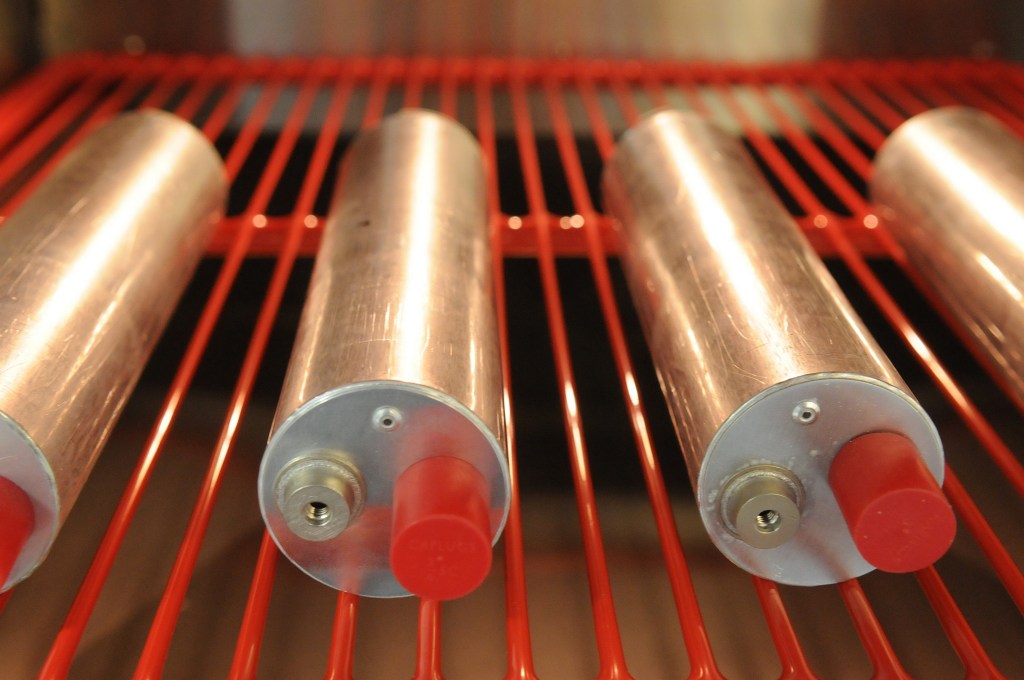Update from the NatureNet Science Fellows: Energy Storage
Conservancy NatureNet Science Fellow Won-Hee Ryu owes the inspiration for his latest breakthrough—using a biomolecule from blood to improve the efficiency of lithium-oxygen batteries—to his wife and her tendency to leave textbooks open around the house.
“I saw bloody pictures she was studying for medical school and thought they were horrible,” he says, but then, he remembered that one of the main functions of blood is “to transport oxygen to organs in the body.”
Maybe, he thought, there is something in blood chemistry that could be used to improve the way the oxygen reaction works within a lithium-oxygen battery. It was a classic Eureka moment, and Ryu’s curiosity about the possibilities of improving batteries with blood rapidly overcame any residual squeamishness.
That was in 2014, and now, two years later, the answer to Ryu’s question was recently published in Nature Communications by him and his colleagues in Andre Taylor’s lab at Yale University.
Their findings? Yes, indeed, blood—specifically the heme biomolecule (part of hemoglobin) that transports oxygen—significantly improves lithium-oxygen battery efficiency.
Efficiency, Efficiency, Efficiency
This matters because efficient battery function, especially charge and recharge capabilities, is one of the key obstacles to the viability of lithium-oxygen batteries as a replacement technology for the lithium-ion batteries that are currently the industry standard for rechargeables, from phones to cars.
As we’ve reported previously in Cool Green Science, scientists are interested in the possibilities of lithium-oxygen batteries as a potential source for next-generation energy storage—especially for cars, computers and, possibly, homes—because they could store two to three times (some estimates say five to 15) as much energy (by weight) as current lithium-ion batteries.
That means phone and computer charges could conceivably last for days or weeks instead of hours, and electric cars could match (or exceed) the range of those powered by gasoline (about 350 miles on average right now). Unfortunately, lithium-oxygen batteries have some major challenges to overcome.
It Always Comes Back to Chemistry
Even though they may look simple on the outside, the lithium-ion batteries in most of our rechargeable devices are the result of complex chemical reactions.
In lithium-oxygen batteries, one of the problems is that the chemical reaction that powers the battery creates by-products (such as lithium peroxide) that build up and bury the electrodes. Buried electrodes mean the battery can’t hold or take a charge.
The value of the heme biomolecule is that it seems to function as a better catalyst because of its ability to bind with oxygen, and prevent the build up of by-products. Briefly, Ryu explains, when used in the lithium-oxygen battery, heme dissolves into the battery’s electrolytes and improves the efficiency of the reduction-oxidation reaction (the chemical reaction that powers the battery).
Another important aspect of this research is its potential to make use of by-products that are currently wasted. According to the authors, using biomolecules extracted from natural supplies can theoretically address the global demand for sustainable and ubiquitous chemical catalysts. Recyclable bio-wastes (for example, blood waste, dietary trash, natural enzymes), may be employed for the environmentally friendly and cost-effective production of catalysts.
Of course, notes Ryu, there is still much work to be done.
“We still need to explore these mechanisms in detail,” he says. “There are various types of heme biomolecule structures – like heme A and heme B and so on. I continue to research different and better combinations of the heme biomolecule among the different battery components [oxygen electrode, electrolyte and anode). One of my ultimate goals is to find an environmentally friendly catalyst molecule like heme for lithium-oxygen batteries.”
Conservancy NatureNet Science Fellow Won-Hee Ryu completed his fellowship at Yale University in 2016, and is continuing his research as an assistant professor of chemical and biological engineering at Sookmyung Women’s University in Seoul, South Korea.
The Conservancy’s NatureNet Science Fellows program is part of our commitment to remaining at the forefront of conservation science. The nanotechnology work of the Fellows, like Won-Hee Ryu, is at the cutting edge of the foundational science we need for alternative energy and clean water technologies.




Join the Discussion
1 comment